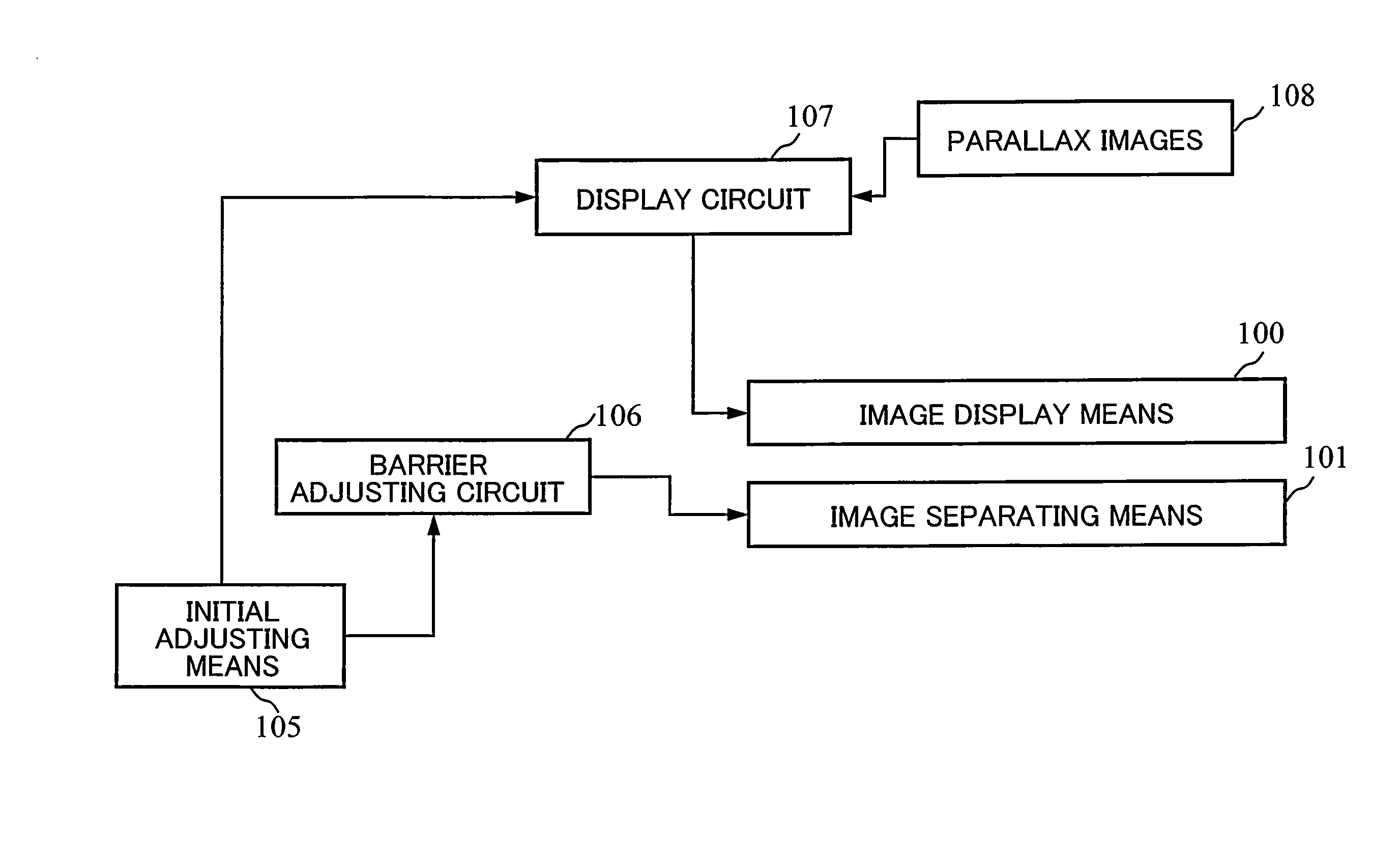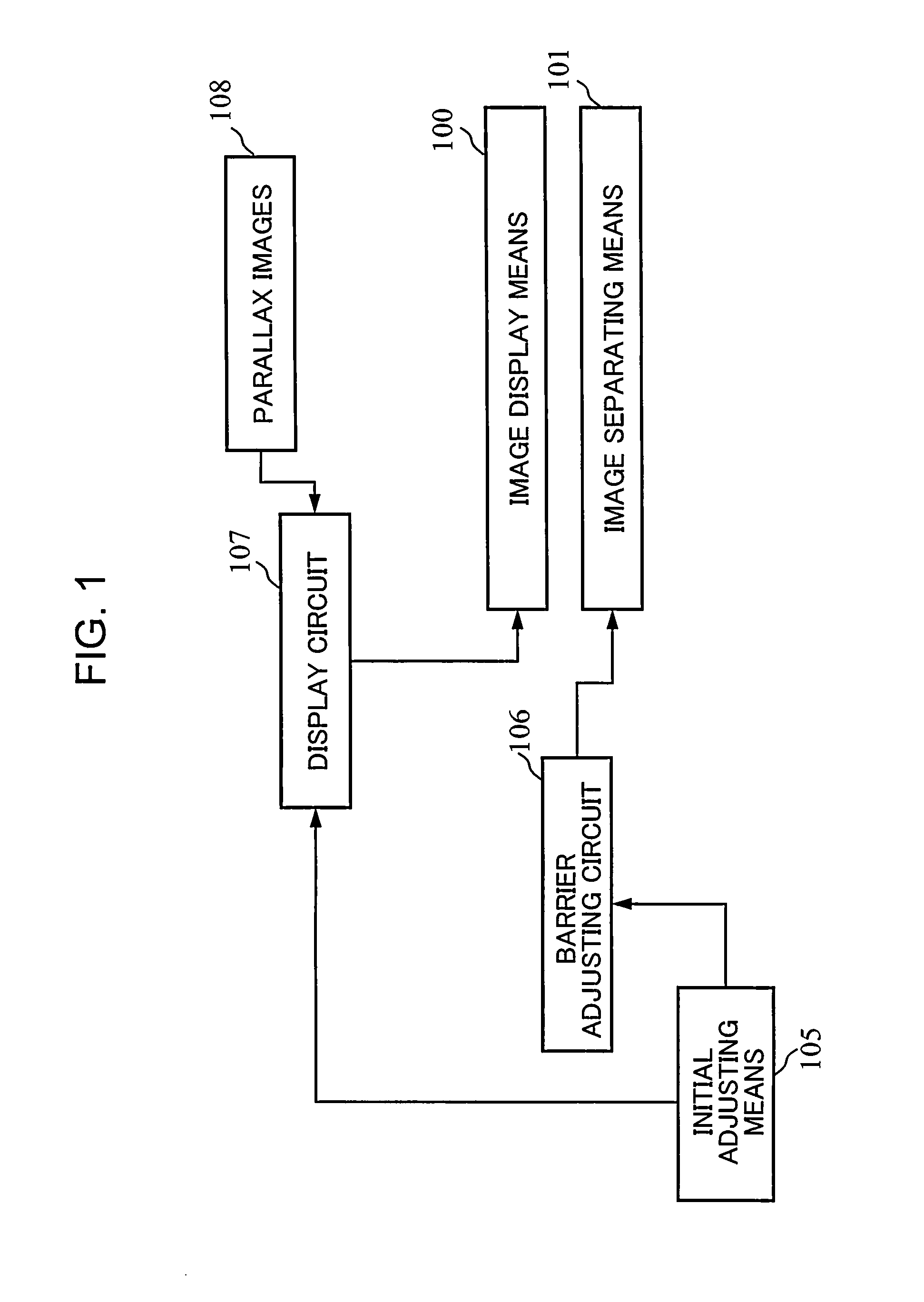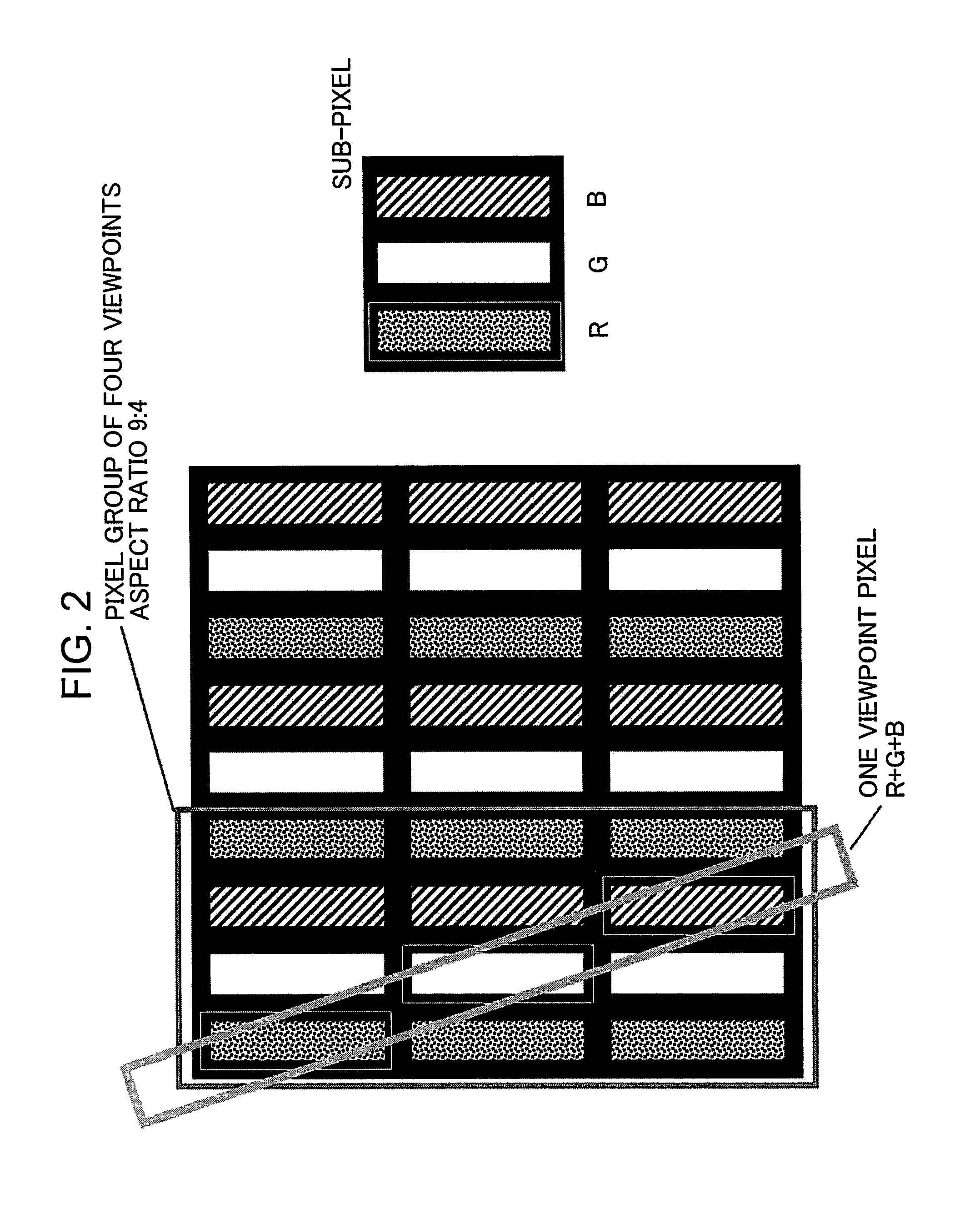Image display device
a display device and image technology, applied in the field of image display devices, can solve the problems of increasing crosstalk, unfavorable mobile applications such as tablets, increasing crosstalk, etc., and achieve the effects of suppressing the average aperture ratio, reducing the viewing distance, and reducing the moiré
- Summary
- Abstract
- Description
- Claims
- Application Information
AI Technical Summary
Benefits of technology
Problems solved by technology
Method used
Image
Examples
first embodiment
[0067]As the first embodiment of the present invention, a device which alternately arranges parallax images in sub-pixel units per two image rows and has a slant barrier aperture with an inclination of 3:2 is described with reference to FIGS. 1 to 9.
[0068]FIG. 1 shows a configuration of an image display device as the first embodiment of the present invention. FIG. 2 shows an image arrangement in which parallax images are alternately arranged per an image row and a slant barrier example 1 with an inclination of 3:1, which are used in conventional examples. FIG. 3 shows an image arrangement example 1, in which parallax images are alternately arranged in sub-pixel units per two image rows, and the slant barrier example 1 with an inclination of 3:2. FIG. 4 schematically shows how an adjacent pixel becomes observed through a slant barrier aperture when the head is moved in the first embodiment. FIGS. 2 to 4 show exemplary cases where parallax number n=4. In FIGS. 2 to 4, a screen on whic...
second embodiment
[0082]The second embodiment of the present invention is described with reference to FIGS. 1 and 10 to 17. As the second embodiment, a pixel arrangement example 2, in which parallax images are alternately arranged in sub-pixel units per two image rows, and stereoscopic image display by means of a slant barrier aperture 4 with an inclination of 3:1 are described.
[0083]The present invention is configured as shown in FIG. 1. The operations are similar to those of the first embodiment. FIG. 10 schematically shows the pixel arrangement example 2 in the second embodiment, in which parallax images are alternately arranged in sub-pixel units per two image rows, and a slant barrier aperture 4 with an inclination of 3:1. FIG. 11 is a schematic view showing how an adjacent pixel becomes observed through the slant barrier aperture 4 when the head is moved with respect to the image display device. An inclination angle of the slant barrier with respect to the vertical direction is 18.435 degrees (...
modification example 1
[0084]As a modification example 1, the example 5 is described with reference to FIG. 12 in which a barrier pattern is provided with a fine notched structure so that an aperture width periodically varies so as to be horizontally symmetrical and irregularities are added to an aperture edge so that an amount / range of blur of pixels observed through a barrier may be controlled. Like the modification example 2 of the first embodiment, the modification example 1 of the second embodiment facilitates moiré reduction by adding the uneven structure (notched structure) described with reference to FIGS. 8 and 9 to an aperture edge. By adopting this method, a reduction in crosstalk may be simultaneously achieved since moiré may be reduced with setting the average aperture ratio Ave_rh to a smaller value (e.g. sp×1.2 to sp×1.6) than sub-pixel sp×2. With keeping the pixel-size average aperture ratio Ave_rh at ThAve_rH, further crosstalk reduction may be achieved by suppressing the maximum aperture...
PUM
 Login to View More
Login to View More Abstract
Description
Claims
Application Information
 Login to View More
Login to View More - R&D
- Intellectual Property
- Life Sciences
- Materials
- Tech Scout
- Unparalleled Data Quality
- Higher Quality Content
- 60% Fewer Hallucinations
Browse by: Latest US Patents, China's latest patents, Technical Efficacy Thesaurus, Application Domain, Technology Topic, Popular Technical Reports.
© 2025 PatSnap. All rights reserved.Legal|Privacy policy|Modern Slavery Act Transparency Statement|Sitemap|About US| Contact US: help@patsnap.com



